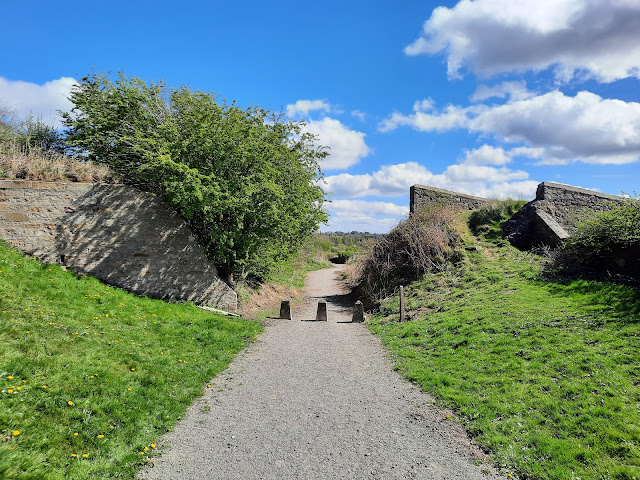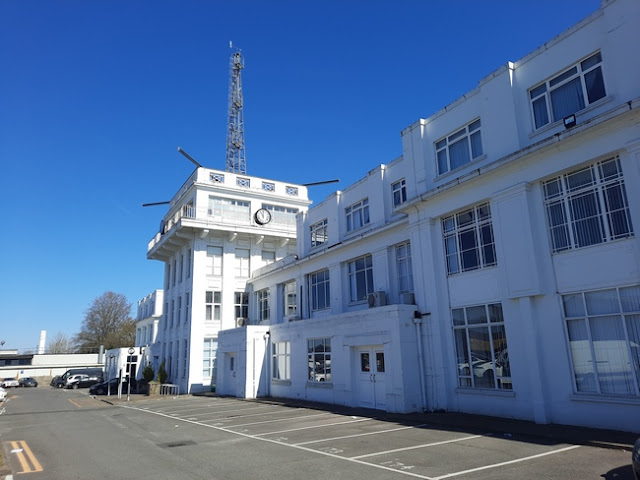Combining Urban Exploration with walking and cycling along public rights of way. These visits are done without breaking in to or trespassing on abandoned sights. No arty silhouette shots of me somewhere I know I shouldn't be! Alongside the details of the sites today are links to the old maps I've used, current maps and pages detailing the history behind the sites. Links open in new tabs so you can follow the route on old and new maps while you read the description.
BROWSE JOURNEYS BY MAP VIEW
Saturday, 26 April 2025
Shildon - Brusselton Incline and Black Boy Branch
Saturday, 12 April 2025
Croydon Airport
Between the wars as civilian air travel was just getting established, the UK's main airport was situated at Croydon. The site began its aviation use in the First World War as farmland was commandeered to establish an air base for intercepting Germany's Zeppelin attacks. It wasn't particularly suited to this as the Zeppelins were generally approaching London by following the Thames and they flew much higher than the planes of the time.
After the First World War many planes built for the war effort were repurposed for civilian use and facilities were needed for these early passenger services combining the infrastructure of an Aerodrome with the customs facilities of a port for passengers and goods to travel internationally, coining the term Airport. The airport also had the worlds first air traffic control tower, basically a shed on stilts in the first version of the airport. The principals of air traffic control were established here, including the invention of the 'Mayday' protocol. Whereas ships had used SOS Morse signals the aircraft used crackly radio communication and a spoken phrase that couldn't be misinterpreted was required.
Following a plane crash at the airport in 1924 the airport was completely rebuilt with a grand terminal building in Functional Neo-Classical style, a variant of Neo-Classical style with simple geometric shapes often mistaken for the Art Deco style it was a forerunner of. The new facilities opened in 1928. The airport also had a hotel alongside, the first dedicated airport hotel. It owed a lot to railway station design in this respect and the booking hall with an information board at the centre and ticket desks and news kiosks.
Passengers would arrive at the airport by a connecting bus from Victoria and with much fewer air travellers at the time would be through the customs controls and departing on a plane within 20 minutes.
Below - A map of Imperial Airways routes by the map maker Harry Beck, famous for the tube map. London (the airport at Croydon) can be seen at the top left. This is displayed in one of the stairways to the control tower. The routes had several stops due to the limited range of aircraft at the time.
With the onset of the Second World War passenger aviation gave way to air force use again. Afterwards it was impossible to expand it to meet growing demand and larger planes and a new airport for London was established on a farm called Heath Row. Croydon survived for a few years but with dwindling flights. In 1959 it closed completely, it's last small planes transferring further south to the new Gatwick Airport (though this was itself an expansion of an earlier aerodrome) as London's new Number 2 airport.
Though much of the site is now industrial estate, the terminal building and hotel survive. The terminal building is now the home of several offices as Airport House but a museum has been established in the control tower, this is open by pre-booked guided tour only on open days held on the first Sunday of the month. Other pop up displays in the main hall of the terminal building are set up, there are also pictures along the corridors and stairways within the building that can be seen on the guided tour.
1940 Map The airport is on the right hand side of the page but interestingly nothing is labelled as such, likely a wartime security measure. Another map produced a couple of years later just shows the site as fields. The runways aren't shown but these were effectively just lines in the grass marked by lighting.
Much more information and booking details for forthcoming tours can be found on the Historic Croydon Airport website.
Below - The main entrance to the terminal building. The hotel alongside can be seen on the right.





























































